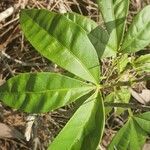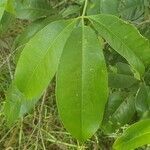A small to medium sized tree. It grows 25 m high. The bark is pale to white. The leaves are opposite. They have 3 oval leaflets. These are 18 cm long. The flowers are bright pink and occur in large numbers. The fruit are small and the seeds are black.



